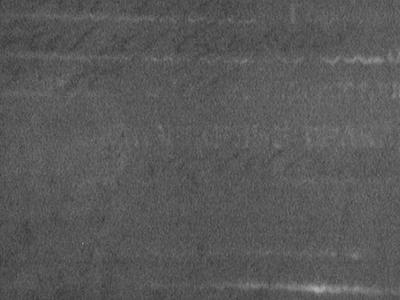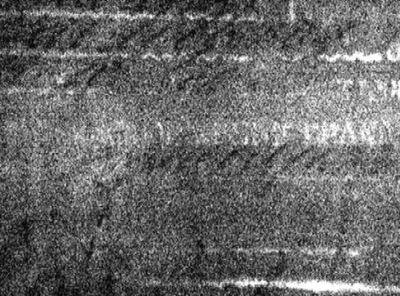
PROCESSING IMAGES OF LUMINESCENT OBJECTS IN FORENSIC EXAMINATION OF DOCUMENTS.
KORNYSHEV Nikolay Petrovich, Candidate of Technical Sciences, Associate Professor
Source: Magazine «Special Equipment» № 1 2007
In technical and forensic examination of documents [1], a fairly wide range of methods is used, including luminescent analysis.
When documents are illuminated in various spectral ranges, the luminescence of dyes and other chemicals, as well as the paper base of the document, is examined.
The main task of processing the obtained television images in the practical application under consideration is to increase the contrast of luminescent objects and reduce the noise level.
This article examines and evaluates the optimal combination of methods for intra-frame and inter-frame video signal processing, taking into account the specifics of images of luminescent objects.
In general, images obtained during luminescent analysis should be classified into a special class with a number of characteristic features:
- clearly expressed bimodality of the histogram of the distribution of the brightness of the image elements, with the first and most powerful mode corresponding to the dark background, and the second, less powerful mode, to the light objects located on this background;
- significant dynamic range of change of the useful signal (from the noise level to the maximum value of the dynamic range of the photodetector);
- static (constant in time) nature of the plot.
The features considered allow the use of the classic method of preliminary analog intraframe processing of the image signal, which consists of linking the background level to the black level in the video signal and subsequent amplification of the signal to the maximum value of the dynamic range in order to increase the contrast of luminescent objects in relation to the background.
The classic and most effective method of noise reduction for static images is interframe processing (digital noise reduction or accumulation), which consists of summing up a sequence of image frames and calculating their arithmetic mean.
As a result, noise is suppressed by Ön times, where n is the number of accumulation frames [2].
The effectiveness of the procedure, which consists of the sequential use of analog intraframe and digital interframe processing, is illustrated in photo 1.
a)

b)
c)
Photo 1. Image of infrared luminescence of stamp ink in the passport:
original (a);
after correction (b);
digital accumulation (c)
Let us consider the gain obtained as a result of processing the image signal of a luminescent object, consisting of successive analog brightness correction (linking the background level to the black level and amplification) and digital noise reduction (accumulation), compared to accumulation and subsequent digital brightness correction.
Let the dynamic range of signal change be from 0 to Umax, the background level corresponds to Uф, the amplitude of the useful signal from the luminescent object is Uс, and the noise level is Uш. Then the maximum signal gain coefficient during preliminary analog processing will be K = Umax/(Umax — Uф) = Umax/Uс
DU – the amplitude quantization step of the signal during subsequent digital processing. Then the number of brightness gradations obtained as a result of the entire image processing procedure will be:
N = Uс/DU (in the absence of preliminary analog processing) and Nо = Umax/DU (in the presence of preliminary analog processing).
Thus, the gain in the number of brightness gradations obtained as a result of the entire procedure will be K = Nо/N times.
At the same time, with preliminary analog processing, the noise level will increase by K times. However, with accumulation, the noise decreases by Ön times. Thus, the noise level for the case without preliminary analog processing will be U’ш = Uш/Ön, and for the case with preliminary analog processing – U»ш = КUш/Ön.
Consequently, an increase in the number of transmitted brightness gradations by K times with the considered processing procedure is simultaneously associated with an increase in noise by the same number of times.
To compensate for this loss, it is necessary to increase the number of accumulated frames n with digital noise reduction by a factor of K2. For static images of luminescent objects, an increase in the accumulation time is not a critical value.
A compromise between the accumulation time and the number of brightness gradations obtained as a result of processing can be achieved by a processing option that includes sequential analog brightness correction, digital noise reduction, and digital brightness correction.
Such a sequence of actions is analogous to the double countertyping method used in photography.
For example, to reduce the accumulation time by 2 times and to maintain a constant noise level, it is necessary to reduce the gain during analog processing by Ö2 times, which will correspond to the same decrease in the number of brightness gradations obtained during subsequent digital brightness correction.
Conclusions
1. Taking into account the specifics of images of luminescent objects, a combination of analog intra-frame and digital inter-frame processing is advisable, namely: video signal correction and digital averaging of the frame sequence.
2. The combination of analog intra-frame and digital inter-frame processing reduces the loss of gradation information compared to the use of exclusively digital methods.
Literature
1. Pavlov I.V., Potapov A.I. Methods and means of checking the authenticity of documents, securities and banknotes. Methodical complex. RIO SZTU, SPb, 2005, p. 349.
2. Digital television. Edited by M.I. Krivosheev. Moscow: Svyaz, 1980.

Добавить комментарий